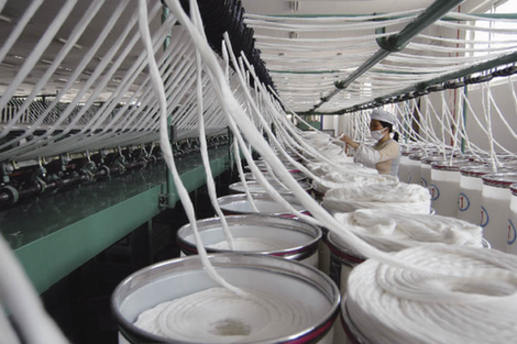| On January 1, 2009, China again increased its export tax rebate rates for 553 types of mechanical and electrical products with high technical content and added value. According to the relevant department in the Ministry of Finance, this adjustment is another component in China's proactive policy response to the current volatile economic environment both at home and abroad, designed to ease the difficulties being experienced by private enterprises and enhance the confidence that the financial crisis can be overcome. "To maintain stable export growth is one of the central tasks of China's foreign trade in 2009," said Minister of Commerce Chen Deming.
Raising Export Tax Rebate Rates:
Can It Solve the Thorny Problem of Foreign Trade?
By staff reporter LIU QIONG
 |
|
China's first raise of export tax rebate rates in August 2008 was mainly aimed at textiles and clothing. |
GUO Qiang, general manager of Shanghai Zhongcheng Digital Technology Co., Ltd., has been on edge due to declining orders, but is breathing a little easier following news that the tax rebate rate for exports of mechanical and electrical products is being raised. "The rise in tax rebate rates is definitely a good thing for us, as it will improve profits on exported goods," said Guo. His company mainly exports audio and video products. "Hopefully we can pull through until the international market takes a favorable turn next year."
He still remembers receiving business from various countries during CeBIT 2007 in Hanover, Germany. Although his factory is still working at full capacity, new orders have decreased sharply under the influence of the financial crisis. The five-year-old company anticipates "tough circumstance this year."
The latest statistics from the General Administration of Customs show that China's export volume for mechanical and electrical products was US $822.93 billion in 2008, or 57.6 percent of the country's total export volume of $1428.55 billion. "The rise in export tax rebates for electromechanical products demonstrates China's resolution to maintain stable export growth," said macro-economic analyst Chen Menggen from Hong Yuan Securities.
Actually this is the fourth adjustment to export tax rebates since August 2008. The first was mainly targeted at textiles and clothing, the second was aimed at textiles, clothing and toys, and the third was focused on certain labor-intensive, mechanical and electrical products.
According to Chen's analysis, the first three adjustments were mainly aimed at labor-intensive products, because under circumstances of decreasing overseas demand, these low value-added products are the first to suffer. With their high technical content and innovation, support for mechanical and electrical products accords with China's industrial restructuring.
The positive effect of raising export tax rebates has not merely been reflected in the electromechanical industry. According to Ms. Li from the Investment Department of Chongqing Zongshen Industrial Group, the increase in export tax rebates for motorcycle products will have a positive impact both upstream and downstream in the production chain.
| 